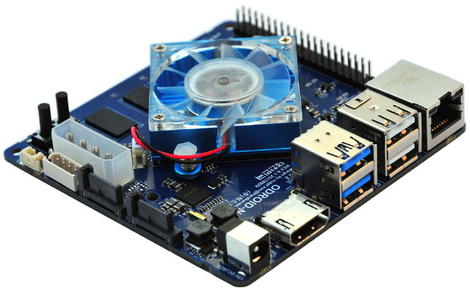A guide to Raspberry Pi alternatives, from low-cost options to more powerful boards.
Six years after the release of the $35 Raspberry Pi computer, demand remains as strong as ever, with sales on track to pass 18 million boards anytime now.
While the Pi’s initial success stemmed from it being a budget board packed with enough computing power and features to perform tasks ranging from controlling robots to running a media center, its enduring popularity results from its strong software support and extensive community, who help newcomers and have created a wealth of tutorials and guides.
But the Pi is not alone, a broad spectrum of single-board computers exist: some similar to the Pi, some budget bare bones offerings and others more expensive but packed with improvements.
The quality of these boards varies greatly, as does the type of tasks they are suited to, and this guide will walk you through some decent options for Pi alternatives, while also highlighting the drawbacks.
WHAT ARE THE STRENGTHS OF THE RASPBERRY PI?
The Pi’s primary strength is its ease of use compared to many rivals.
Years of work by the Raspberry Pi Foundation improving the Pi’s core software have created a default operating system called Raspbian, which not only gets the best out of the Pi hardware but is loaded with free software — both the everyday basics like browsers and an office suite, and also tools for learning to code.
Yet the official support is only half the story, with much of the board’s usability coming from the plethora of community-created guides and tutorials — with the answer to many questions only a Google away. Beyond the staunch community support, the Pi can be augmented by a broad ecosystem of boards and kits that extend its capabilities, turning the board into everything from a robot to a virtual assistant.
The Pi also strikes a shrewd balance between price and capability. Co-creator of the board Eben Upton has stated in the past that keeping the board affordable is very important, and its latest incarnation, the Raspberry Pi 3 Model B manages to pack an awful lot into a $35 computer.
WHAT ARE THE SHORTCOMINGS OF RASPBERRY PI?
There hasn’t been a release of a new Raspberry Pi board since February 2016 and in the intervening years some of the technologies that were too expensive for the Pi 3 have become affordable.
New boards have started to emerge that cram in features not found in the Pi 3 — memory, faster processors, Gigabit Ethernet or support for 4K displays — onto boards costing $35 or very close to it.
That said, the specs list often doesn’t tell the whole story. Upon testing, certain boards that outperform the Pi on paper have been found wanting, due to bottlenecks in the system.
Poor software and driver compatibility is also a common complaint about Pi rivals, although some are far better than others in this regard.
WHAT’S THE BEST CHEAP PI ALTERNATIVE?
- PINE A64
- ODROID C1+ (Same Price)
- Orange Pi Light 2
WHICH ARE CHEAP ALTERNATIVES TO THE RASPBERRY PI ZERO W?
- Orange Pi Zero H2
- Nano Pi Neo (Same Price)
Source: What are the best Raspberry Pi alternatives? Everything you need to know about Pi rivals | ZDNet
